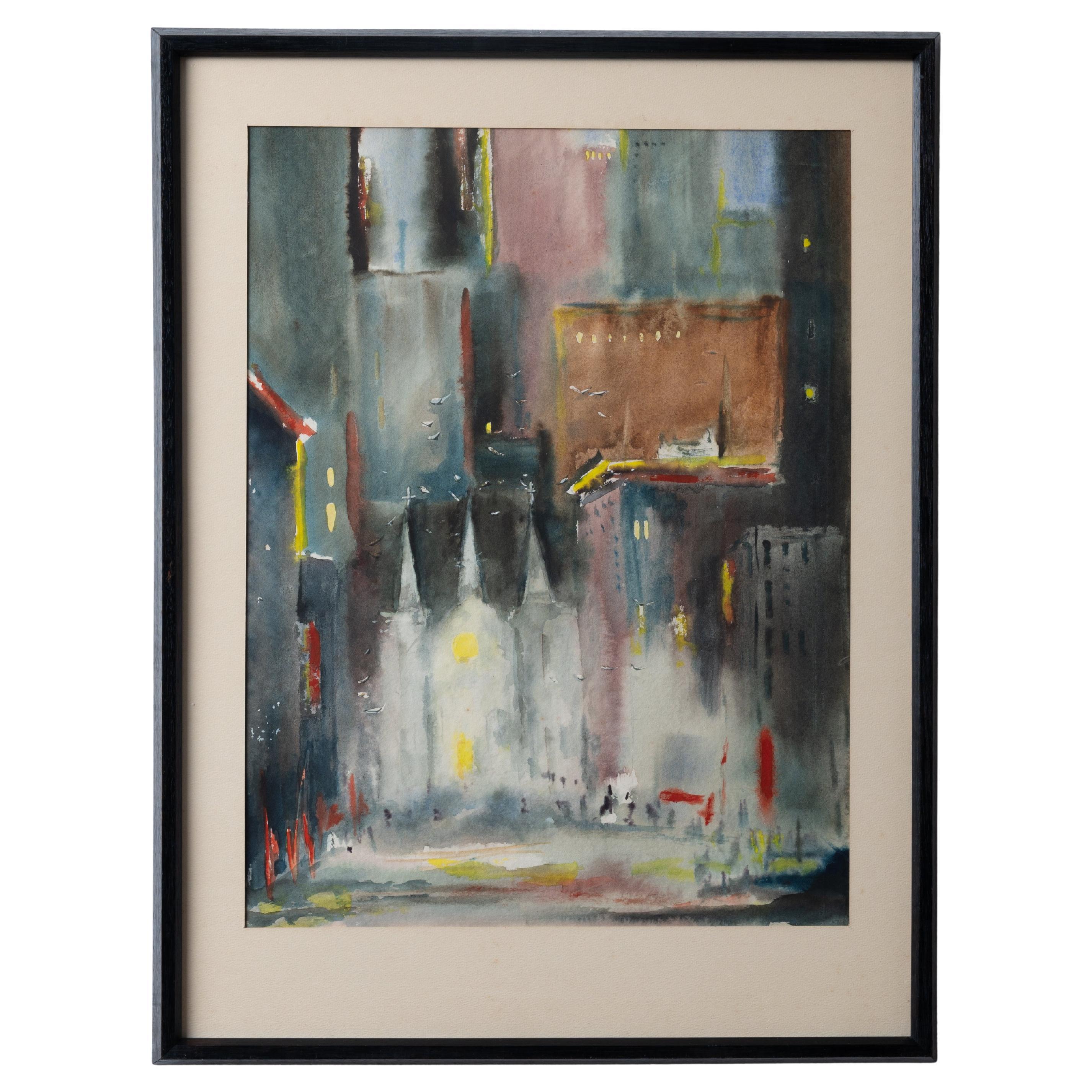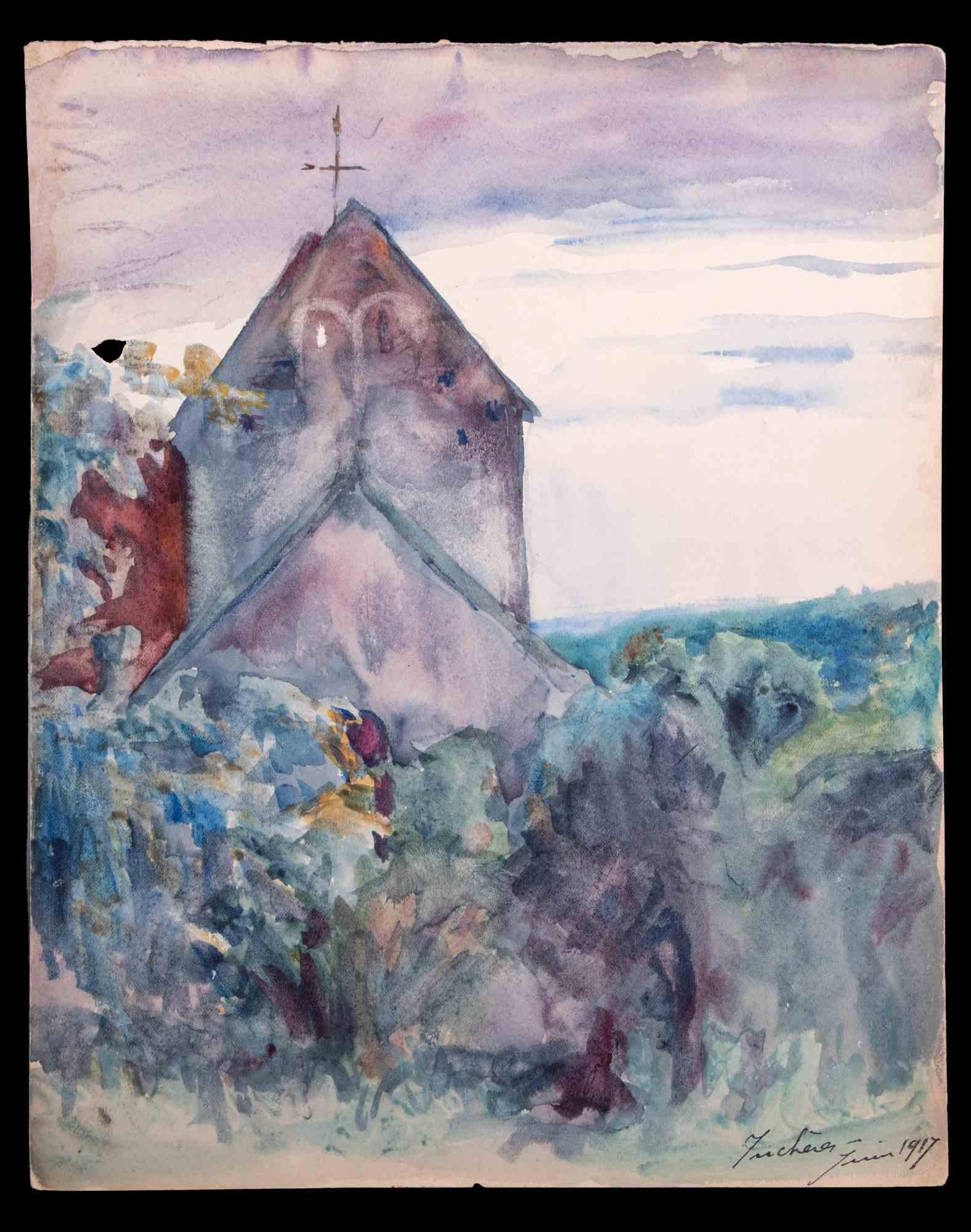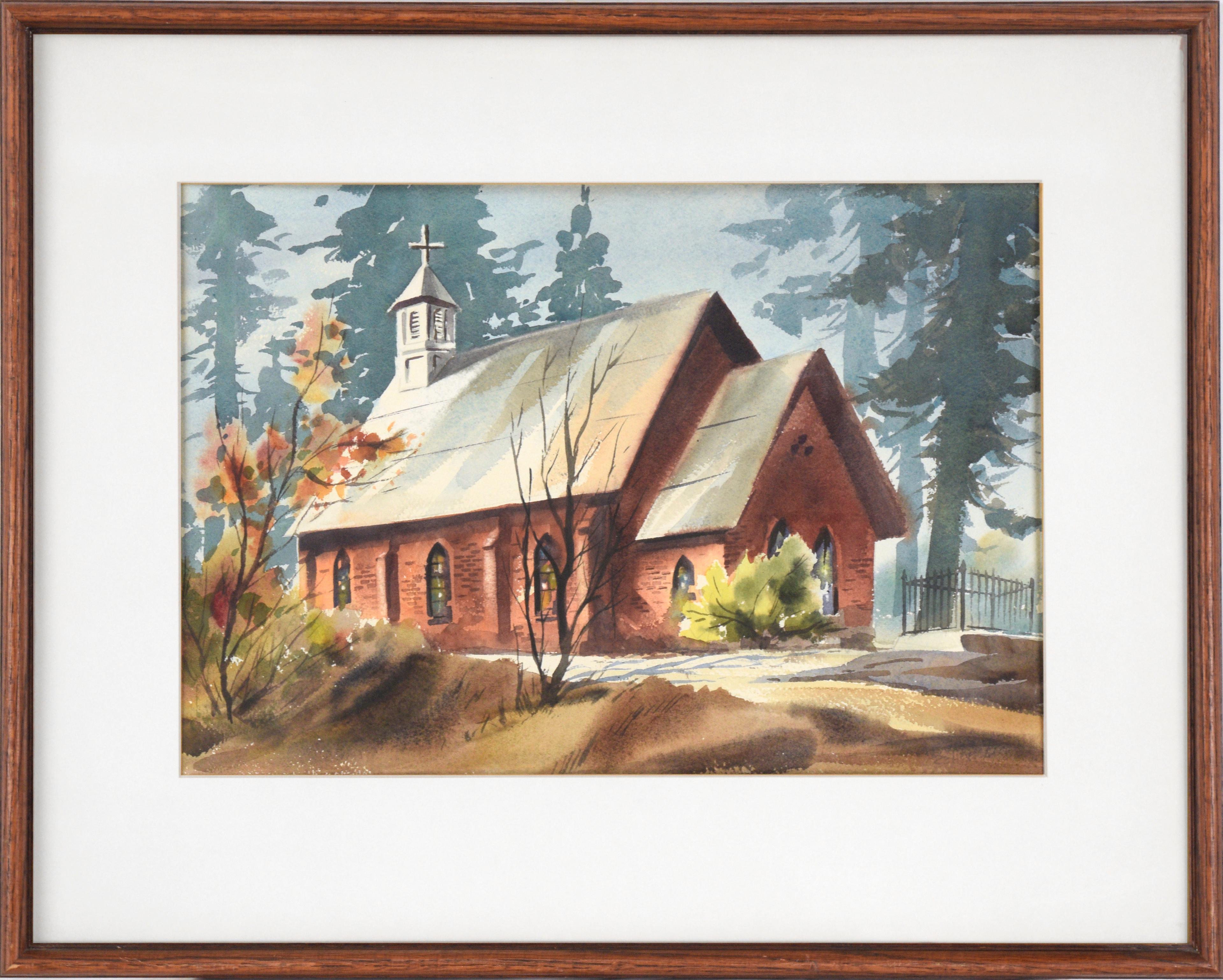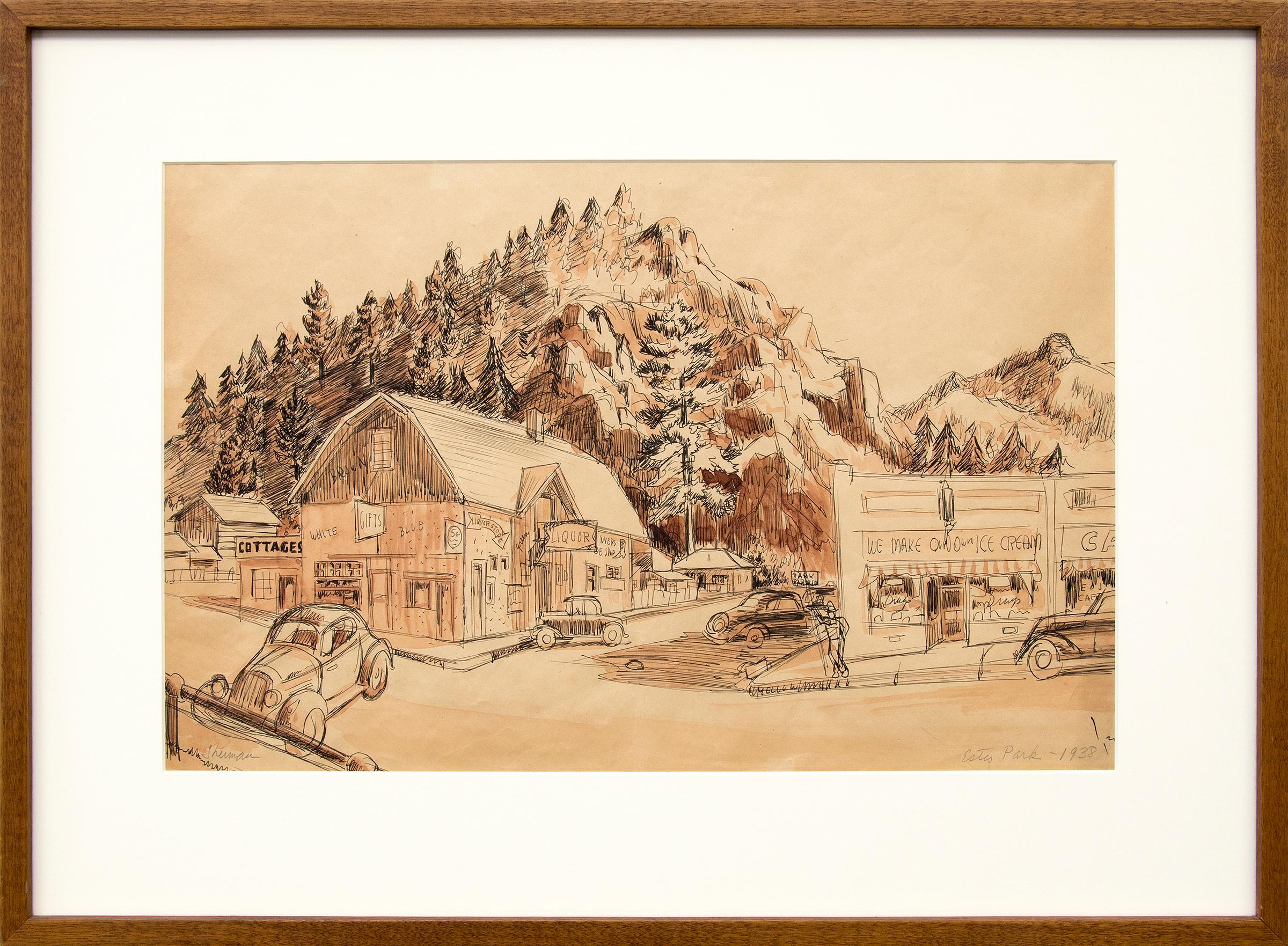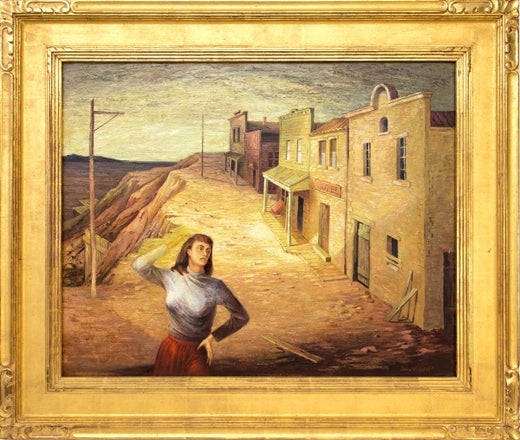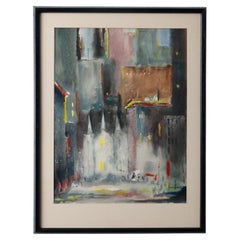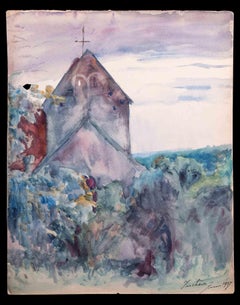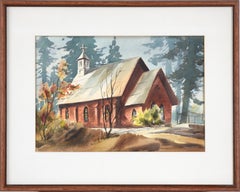Jenne MagafanChurch in Leadville, Colorado, 1930s Framed Landscape Watercolor & Ink Painting1938
1938
About the Item
- Creator:Jenne Magafan (1916 - 1952, American)
- Creation Year:1938
- Dimensions:Height: 22.5 in (57.15 cm)Width: 28.25 in (71.76 cm)Depth: 1.25 in (3.18 cm)
- Medium:
- Movement & Style:
- Period:
- Condition:very good vintage condition.
- Gallery Location:Denver, CO
- Reference Number:Seller: DCG 179191stDibs: LU2735025142
Jenne Magafan
Jenne and Ethel Magafan were identical twins, born in Chicago to a Greek immigrant father and a Polish mother. Due to health concerns about their father, the family moved to Colorado, living first in Colorado Springs and then in Denver. He was a proud supporter of their artistic ambitions but died suddenly in 1932, a heavy blow to both of them. They attended East High School in Denver, where they found a mentor in their art teacher Helen Perry. She had studied at the Art Institute of Chicago but had later abandoned a career as an artist, making her all the more determined to help the Magafan twins succeed artistically. While still in high school, the twins impressed artist Frank Mechau and Helen Perry paid for their lessons with him. He subsequently invited them to apprentice with him at his Redstone studio. In 1936, Jenne won the Carter Memorial Art Scholarship and shared it with her sister so that they both could attend the Broadmoor Art Academy in Colorado Springs. Once they ran out of money, Mechau, now teaching there, hired them as assistants. Through their involvement at the Academy, the twins entered into careers as muralists, working at first with Mechau and then with Peppino Mangravite. In 1939, Jenne was awarded her first commission for a mural at the Albion, Nebraska Post Office. Eventually, she won a total of seven commissions. For the work, she traveled across the country in a station wagon. Her daughter has said of her mother's experience that, “They saved up gas coupons as fuel was rationed and drove cross country on retreads or refurbished old tires”. Their federally sponsored murals could stir up exciting responses from local citizens. Jenne's favorite mural was Cowboy Dance at the Anson, Texas post office, but the local newspaper took offense to a whiskey jug painted in the lower corner, citing that, “Throughout the history of Anson there has never been an open saloon”. Meeting the artists Doris Lee and Arnold Blanch in Los Angeles, the twins learned of the art colony in Woodstock, New York and in 1945 they went to visit. That same year, their work was exhibited at the Los Angeles Museum of Art and the National Academy of Design. Marrying her longtime love, Edward Chavez, Jenne moved to Woodstock along with her sister where, for the first time, the sisters didn't live together. Ethel didn't look favorably upon her brother-in-law's dominating personality and this forced their styles to develop more independently. When Chavez won a Fulbright scholarship, the couple traveled to Italy. During this time, Jenne went to visit her sister in Greece, where Ethel was fulfilling her Fulbright. In 1952, the Magafans and their husbands returned to the States and less than a week after their return Jenne died in Albany Hospital of a cerebral hemorrhage.
- ShippingRetrieving quote...Shipping from: Denver, CO
- Return Policy
More From This Seller
View All1930s American Modern Landscape Drawings and Watercolors
Ink
1930s American Modern Landscape Drawings and Watercolors
Watercolor
20th Century American Impressionist Landscape Paintings
Watercolor
1940s American Modern Landscape Paintings
Watercolor
1940s American Modern Landscape Paintings
Oil, Masonite
1940s American Modern Landscape Paintings
Oil
You May Also Like
Mid-20th Century American Impressionist Landscape Drawings and Watercolors
Paper, Watercolor
Mid-20th Century Mid-Century Modern Paintings
Wood, Paper
1910s Modern Figurative Drawings and Watercolors
Watercolor
Late 20th Century American Impressionist Landscape Drawings and Watercolors
Watercolor, Laid Paper
Mid-20th Century American Impressionist Landscape Drawings and Watercolors
Paper, Watercolor
20th Century Realist Paintings
Paper, Watercolor


